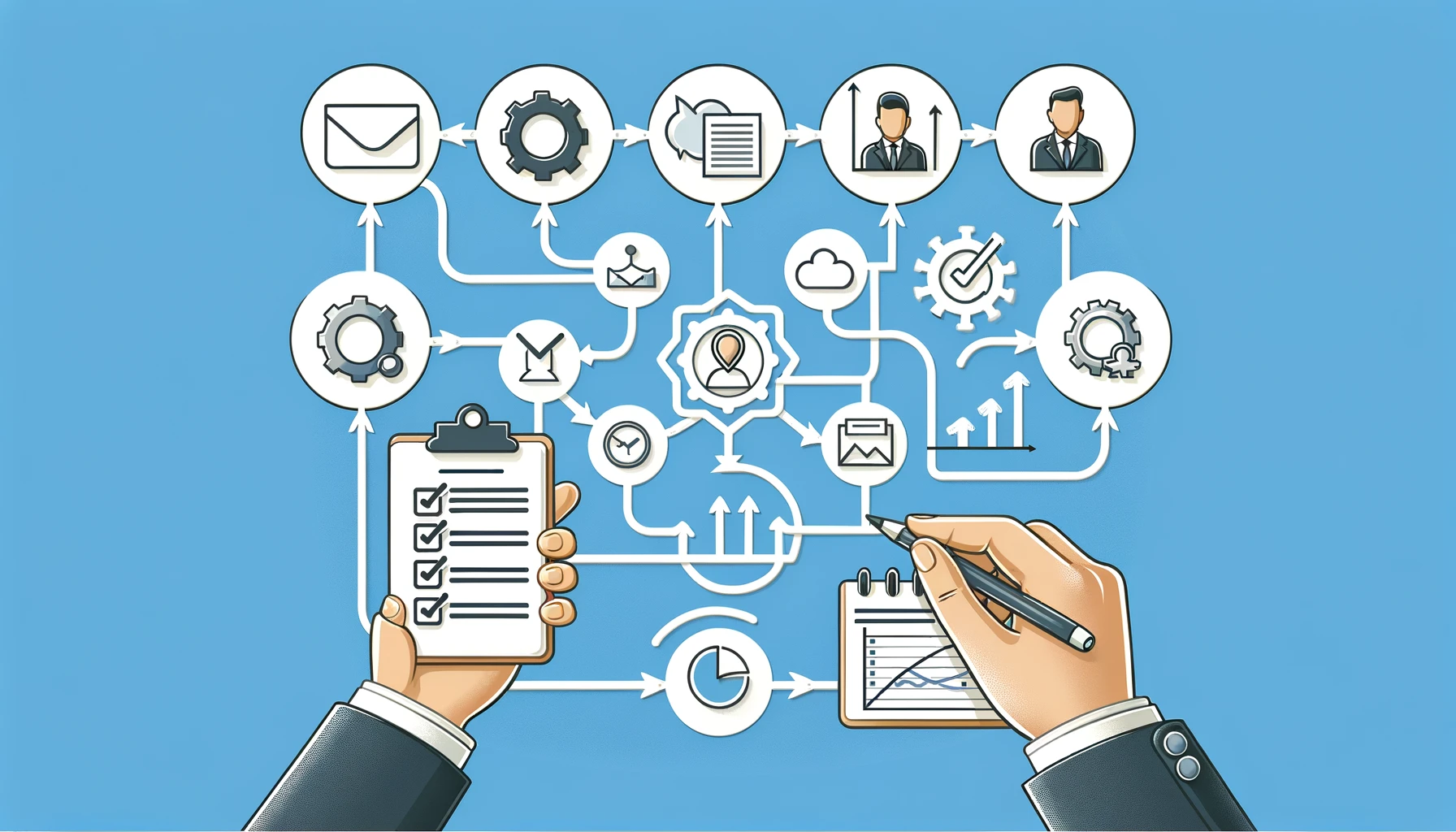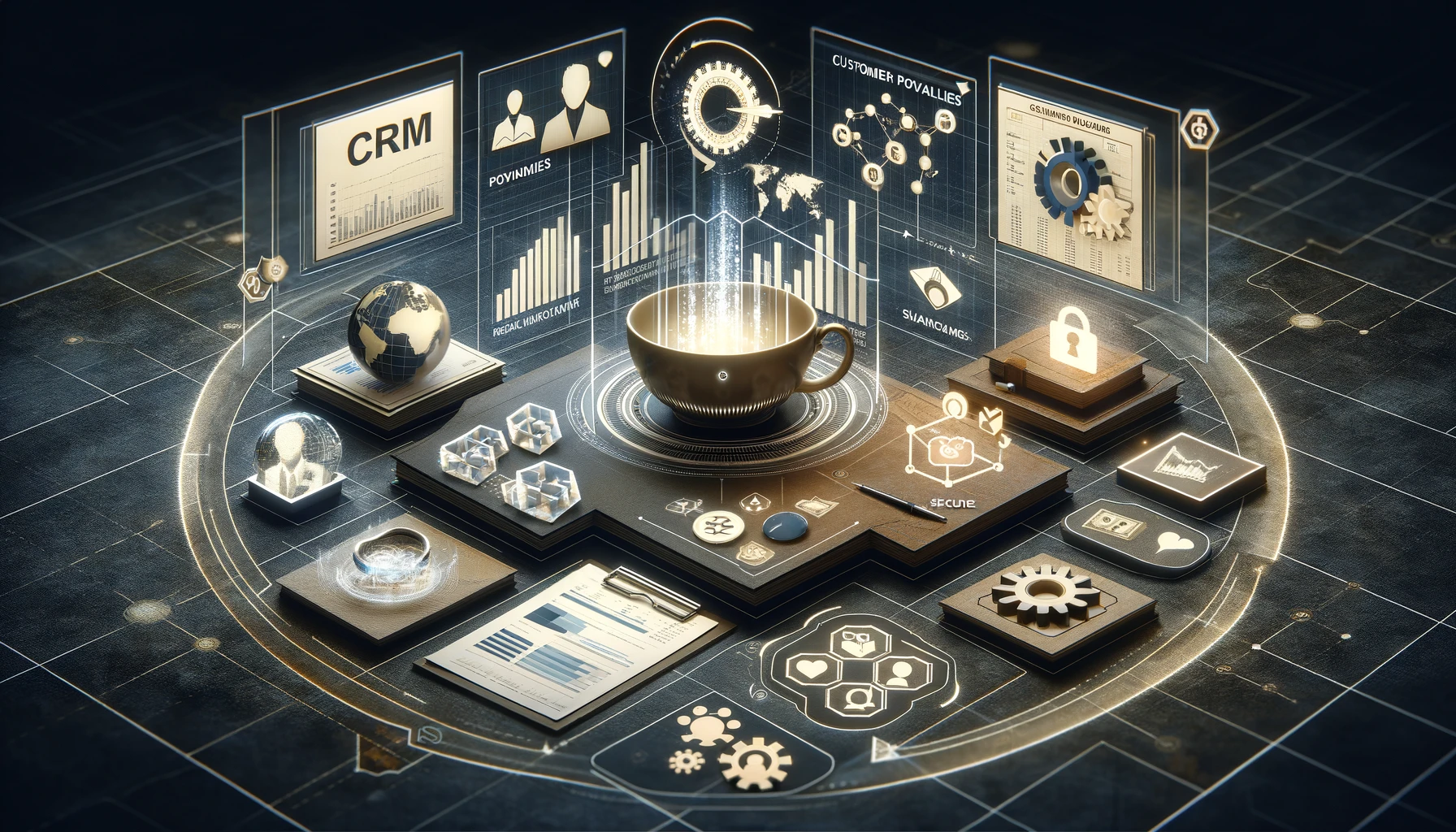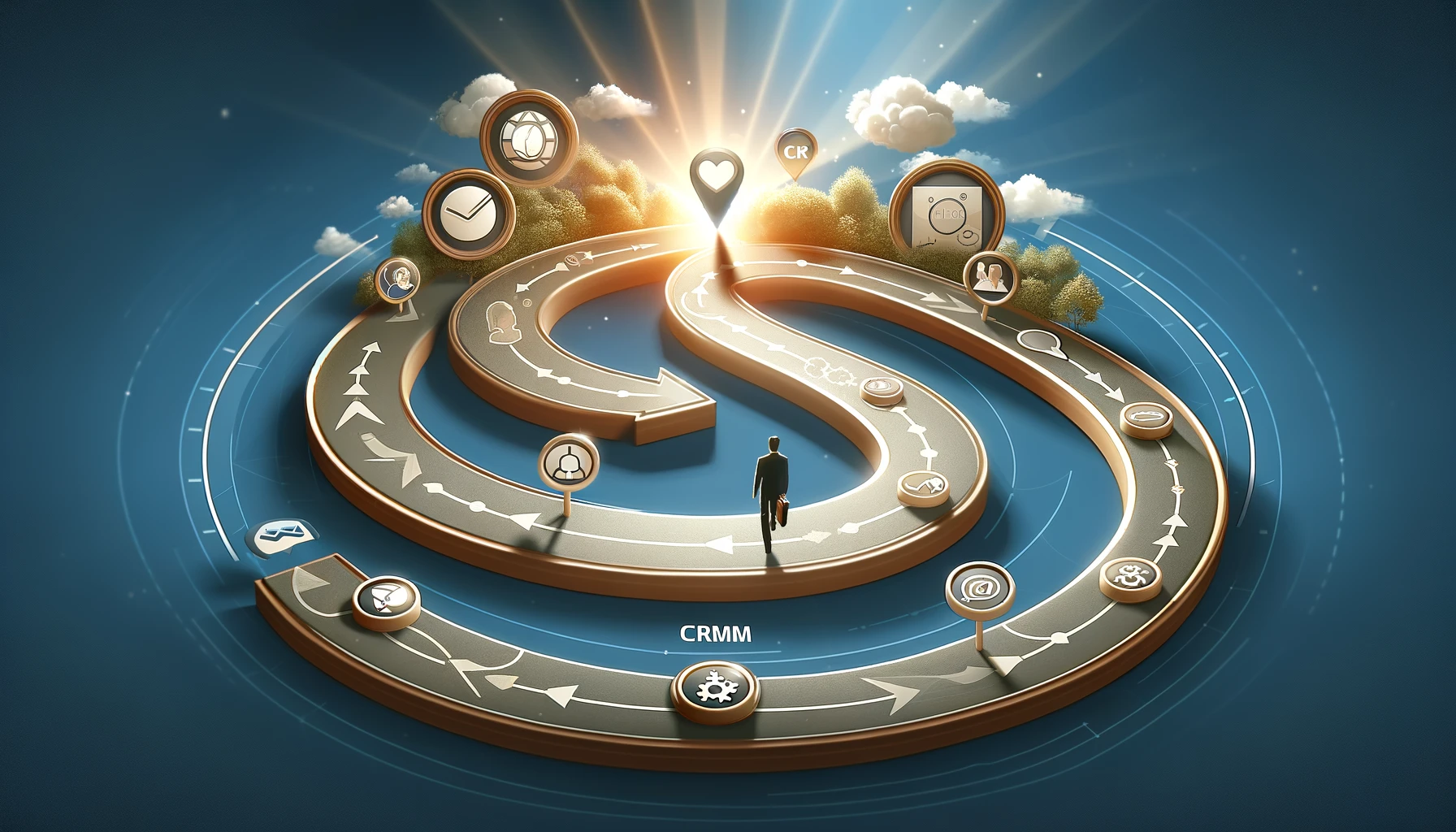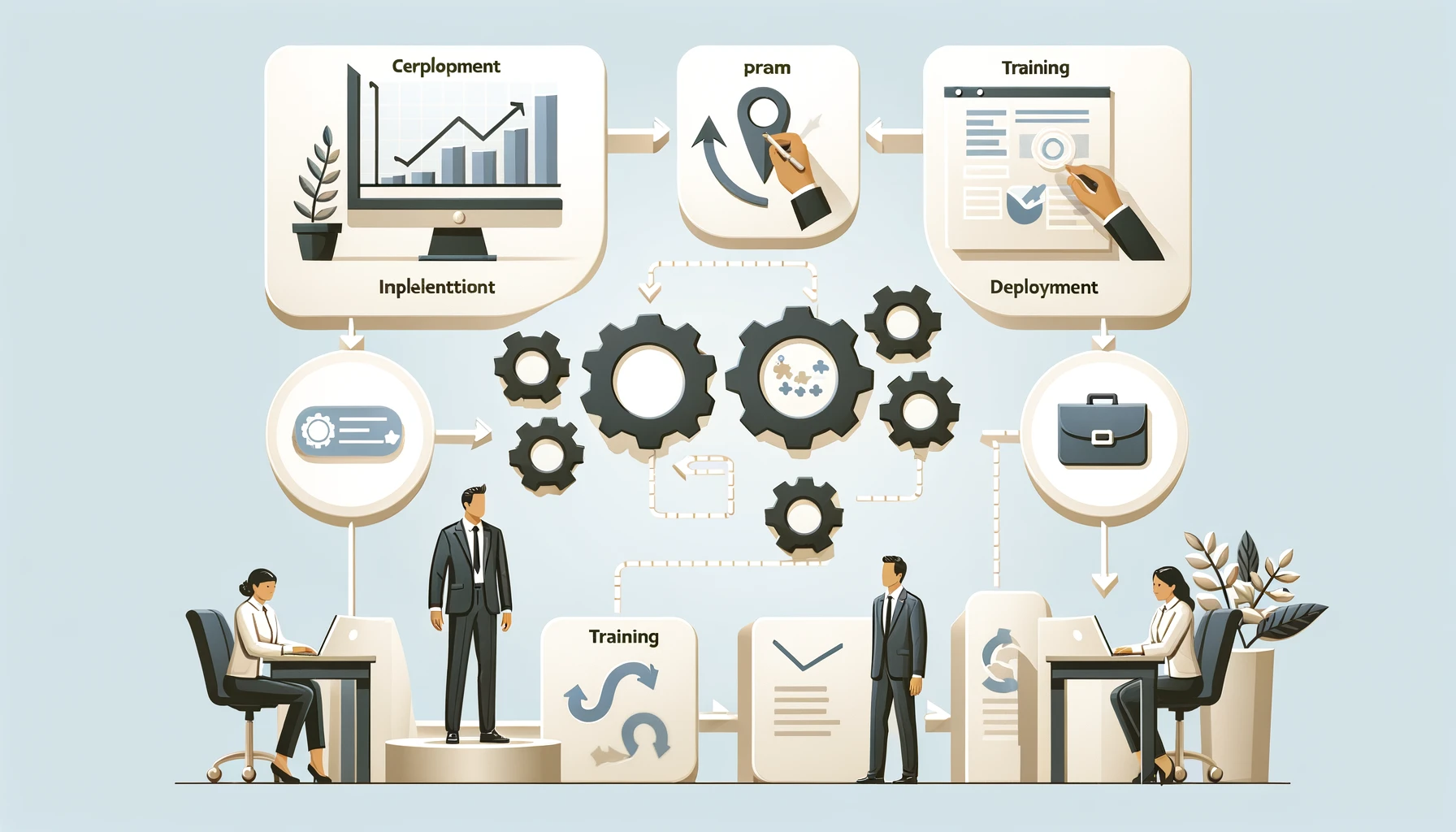Mastering Customer Resource Management

Understanding CRM: Explore the definition of customer resource management and its role in enhancing business-client relations.
Unraveling the Customer Resource Management Definition
In the realm of business operations, the term “Customer Resource Management” often pops up. But what exactly does it mean? Let’s dive into the details.
Customer Resource Management, more commonly known as CRM, is a comprehensive strategy that businesses implement to manage all their interactions and relationships with customers and potential customers. It’s a crucial tool that helps businesses build stronger relationships with their customers, improve customer service, and increase customer retention.

The core idea behind CRM is to place the customer at the center of your business operations. By doing so, companies can understand their customers’ needs and behaviors better, enabling them to provide personalized experiences, which in turn, leads to increased customer loyalty and revenue.
Here are a few key aspects of CRM:
- Contact Management: This involves storing crucial customer information, including contact details, demographics, buying preferences, and interactions with the company.
- Interaction Tracking: CRM tools enable companies to document conversations and interactions with customers across various channels, including phone, email, social media, and in-person meetings.
- Workflow Automation: CRM software can automate routine tasks, such as sending follow-up emails or scheduling sales calls, allowing teams to focus on more important tasks.
- Reporting and Analytics: CRM systems provide valuable insights into customer behaviors and trends, helping businesses make data-driven decisions.
The impact of CRM on business operations can be significant. For instance, one company saw a 66% decrease in order processing time and an 80% reduction in order error rate after implementing a CRM system.
| Metric | Before Implementation | After Implementation | Improvement |
|---|---|---|---|
| Order Processing Time (hours) | 24 |
8 |
-66% |
| Order Error Rate (%) | 10 |
2 |
-80% |
In a nutshell, CRM is not just a tool or a process - it’s a business strategy that puts the customer at the heart of your operations. By understanding the customer resource management definition and implementing its principles, businesses can not only enhance their customer service but also achieve their growth objectives.

So, whether you’re a small start-up or a large corporation, understanding and implementing CRM can take your customer relationship management to new heights.
How Customer Resource Management Streamlines Business Operations
Streamlining business operations is an art that every company strives to master. With the help of Customer Resource Management (CRM), this task becomes a lot easier. CRM systems offer a multitude of benefits that make your business run more smoothly and efficiently.
Firstly, CRM systems offer a centralized database for all your customer-related information. This means all the data you need is in one place, ready to be accessed and analyzed. This is instrumental in making informed decisions, offering personalized services, and coordinating marketing campaigns.

Secondly, CRM systems automate repetitive tasks, freeing up your team’s time to focus on more strategic activities. From sending out automated emails to scheduling appointments, CRM takes care of it all. This not only increases productivity but also reduces the chances of human error.
The integration of CRM with other business systems, such as marketing automation or e-commerce platforms, is another major advantage. This integration allows data to flow seamlessly between systems, providing a more holistic view of the customer journey.
Lastly, CRM tools come with robust reporting and analytics capabilities. These features provide valuable insights into customer behavior, preferences, and trends. Businesses can leverage these insights to forecast sales, identify opportunities, and devise strategies to improve customer satisfaction.

For instance, one company used CRM analytics to identify their most profitable customer segments. By focusing their marketing efforts on these segments, they were able to increase their revenue by 20%.
| Metric | Before CRM | After CRM | Improvement |
|---|---|---|---|
| Revenue Increase (%) | 0 |
20 |
+20% |
As this example illustrates, understanding the customer resource management definition and implementing CRM can have a transformative impact on your business operations. It’s a powerful tool that can drive growth, enhance customer satisfaction, and improve operational efficiency.
Examples of Effective Customer Resource Management in Action
One of the best ways to understand the customer resource management definition is to see it in action. Let’s explore some real-life examples of how businesses have leveraged CRM to enhance their operations
A prominent e-commerce company decided to implement a CRM system to better manage their growing customer base. They were struggling with fragmented customer data, duplicated efforts, and inconsistent customer service. After implementing CRM, they experienced a significant transformation.
- Centralized Data: With CRM, the company was able to centralize all customer data, eliminating duplicate records and ensuring consistent information across all departments.
- Improved Customer Service: The CRM system allowed customer service representatives to access all customer interactions, leading to faster resolution times and increased customer satisfaction.
- Enhanced Marketing: The company was able to segment their customers and tailor their marketing efforts based on individual customer preferences, leading to higher conversion rates.

Another example involves a financial services firm. They were dealing with low customer retention rates and wanted to improve their customer relationships. With the help of CRM, they were able to:
- Identify At-Risk Customers: The CRM system helped the firm identify customers who were likely to churn based on their interaction patterns. This allowed them to proactively address customer issues and improve retention.
- Personalize Communication: The firm was able to personalize their communication with customers, leading to increased engagement and loyalty.
- Automate Processes: Routine tasks such as follow-ups and reminders were automated, leading to increased efficiency and productivity.

These examples illustrate the transformative potential of CRM. By understanding the customer resource management definition and effectively implementing CRM, businesses can revolutionize their operations, leading to improved customer satisfaction, increased efficiency, and ultimately, higher profits.
Making Business Easier with Customer Resource Management
In the fast-paced world of business, efficiency is key. As such, understanding the customer resource management definition can be a game-changer. CRM systems are designed to streamline operations, making business easier and more efficient.
CRM systems offer a centralized platform for storing and managing customer data. This means all the necessary information is readily accessible, which greatly simplifies decision-making processes. No more sifting through piles of data or juggling multiple platforms.

Moreover, CRM systems automate repetitive tasks, allowing teams to focus on more strategic activities. This automation not only boosts productivity but also reduces the potential for human error.
Consider a scenario where a company was struggling with timely follow-ups due to the volume of customers. Upon implementing a CRM system, automated follow-ups were established, ensuring that no customer was overlooked. As a result, customer satisfaction increased and the company saw a rise in repeat business.
In addition, CRM systems offer robust reporting and analytics capabilities. They provide valuable insights into customer behavior, preferences, and trends, which can be leveraged to devise effective business strategies.

For example, one company was able to identify a trend of increased purchases during certain seasons. They used this information to plan their marketing campaigns, resulting in higher sales during these peak periods.
| Metric | Before CRM | After CRM | Improvement |
|---|---|---|---|
| Seasonal Sales Increase (%) | 15 |
30 |
+100% |
In summary, understanding the customer resource management definition and effectively implementing a CRM system can make business operations significantly easier and more efficient, ultimately leading to increased customer satisfaction and improved bottom line.
Kickstarting Your Journey with Customer Resource Management
Embarking on a journey with Customer Resource Management (CRM) can seem daunting, yet it is an essential step towards boosting your business operations. The first step in this journey is understanding the customer resource management definition, and how it applies to your business.
CRM is not just about software; it’s a strategy that puts the customer at the heart of your business. It allows you to understand your customers’ needs and behaviors, enabling you to provide personalized experiences and build stronger relationships.
When starting with CRM, consider the following steps:
- Identify Your Needs: Understand what you want to achieve with CRM. Do you want to improve customer service, increase sales, or streamline operations? Identifying your goals will help you choose the right CRM solution.
- Choose the Right CRM System: There are numerous CRM systems available in the market, each with its unique features. Choose one that aligns with your business needs and goals.
- Train Your Team: Ensure your team understands the chosen CRM system and how to use it effectively. This will help to maximize its benefits.

To illustrate the transformative potential of CRM, consider a company that was struggling with customer retention. After understanding the customer resource management definition and implementing a CRM system, they saw a significant improvement.
| Metric | Before CRM | After CRM | Improvement |
|---|---|---|---|
| Customer Retention Rate (%) | 70 |
85 |
+21.4% |
In conclusion, kickstarting your journey with CRM can lead to improved customer satisfaction, increased efficiency, and ultimately, a boost in your bottom line. Remember, the key to successful CRM implementation lies in understanding the customer resource management definition and applying it effectively within your business operations.

The Impact of Customer Resource Management on Business Growth
Understanding and implementing CRM can have a profound impact on business growth. The core principle of CRM - putting the customer at the heart of the business - is a surefire way to drive growth and success.
CRM systems can help businesses identify their most profitable customers, understand their buying behavior, and target them more effectively. This leads to increased sales and revenue. For instance, a business was able to increase its sales by 30% within six months of implementing a CRM system.
| Metric | Before CRM | After CRM | Improvement |
|---|---|---|---|
| Sales Increase (%) | 0 |
30 |
+30% |
CRM systems also help businesses improve customer retention, which is often more cost-effective than acquiring new customers. By providing personalized experiences and exceptional customer service, businesses can increase customer loyalty and repeat purchases.
Moreover, CRM systems streamline business operations, leading to improved efficiency and productivity. This, in turn, reduces operational costs and increases profitability. All these factors contribute to business growth.
In addition, CRM systems provide valuable insights into market trends and customer behavior. These insights can be leveraged to identify growth opportunities, such as new markets or product ideas.
In essence, understanding the customer resource management definition and implementing CRM can be a game-changer for businesses. It’s a powerful tool that can drive growth, enhance customer satisfaction, and improve operational efficiency, leading to a competitive edge in today’s dynamic business landscape.
FAQs
-
What is Customer Resource Management (CRM) in Modern Businesses? CRM in modern businesses refers to a comprehensive approach that combines technology, strategies, and practices to manage all interactions with current and potential customers. It focuses on streamlining processes, improving customer relations, and driving business growth.
-
How Does CRM Enhance Customer Interactions? CRM enhances customer interactions by providing detailed insights into customer behaviors and preferences. It enables businesses to personalize communication, respond quickly to customer inquiries, and anticipate customer needs, leading to a more effective and satisfying customer experience.
-
What Makes CRM Essential for Sales and Marketing Teams? CRM is essential for sales and marketing teams as it provides a centralized platform for tracking all customer interactions, manages leads and sales pipelines, and offers tools for targeted marketing campaigns. This integration ensures that teams are aligned and can work more effectively towards common goals.
-
Can Small Businesses Benefit from CRM? Yes, small businesses can significantly benefit from CRM as it helps them organize customer information, automate tasks, and improve customer service. CRM systems are scalable, making them suitable for businesses of all sizes, and they provide valuable insights that can drive growth even in competitive markets.
-
What Are the Future Trends in CRM for Businesses? Future trends in CRM for businesses include the integration of artificial intelligence and machine learning for predictive analytics, enhanced personalization, mobile CRM solutions for on-the-go access, and the incorporation of social media channels for broader customer engagement and support.
Read more about low-code platform ozma.io
CRM for Beginners: Easy to Start!
CRM for Photographers: More Clients and Efficiency





